What to Expect During an Endoscopy Procedure
Reviewed by AIMS Education Faculty
August 5, 2022
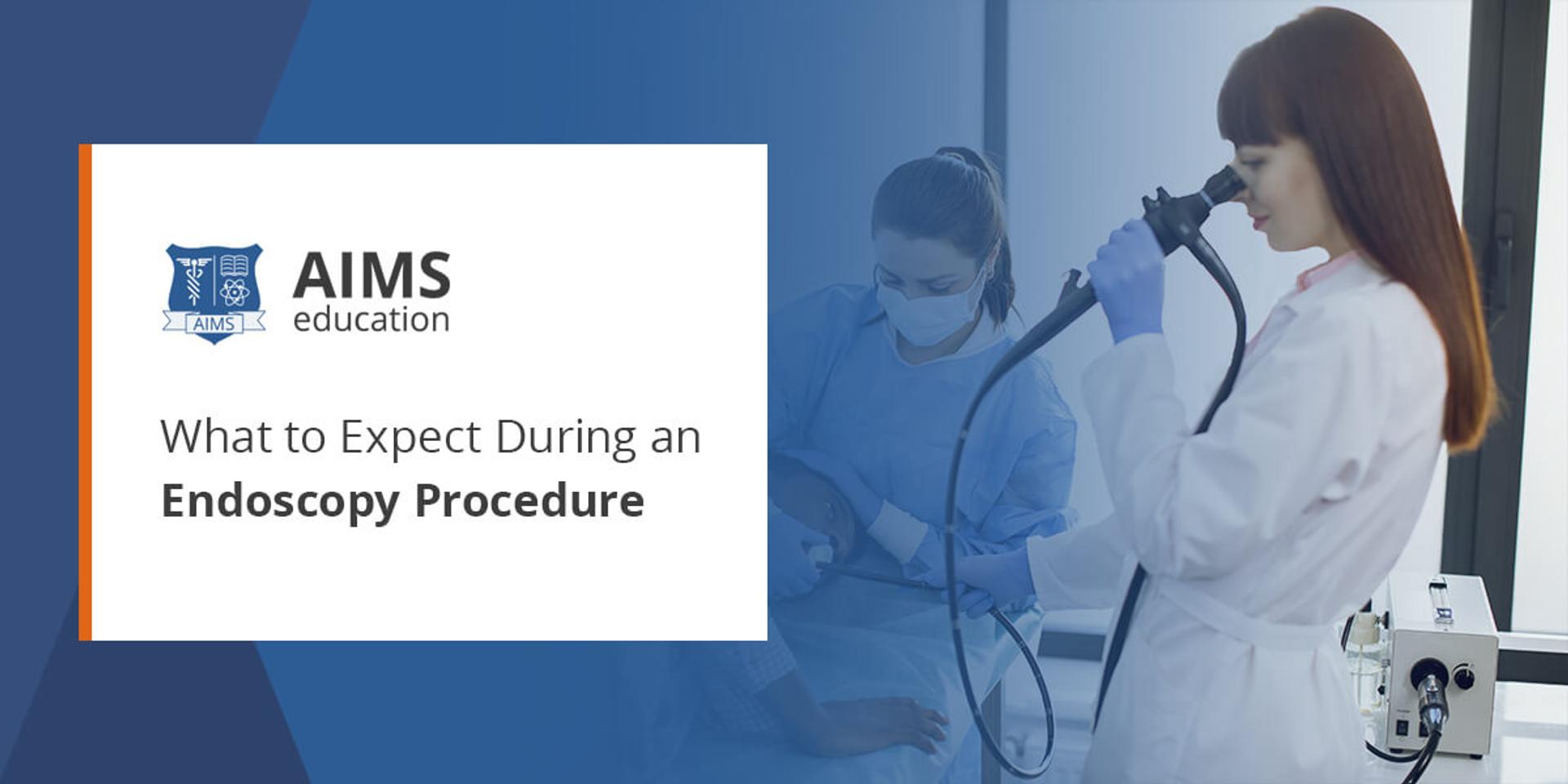
Whether you ate too much, not enough, or something disagreeable, stomach aches come and go. Luckily, you don't need an invasive procedure whenever you experience unpleasant symptoms with your digestion. A nonsurgical procedure like an endoscopy can provide invaluable information about symptoms you're experiencing so you can remain healthy.
Knowing what to expect during an endoscopy is helpful whether you need an endoscopy or are learning about it from an academic perspective. Continue reading to learn more about an endoscopy, what to expect with one, and how to become an endoscopy technician.
What Is an Endoscopy Procedure?
With an upper endoscopy, a gastrointestinal (GI) doctor — gastroenterologist — examines the upper part of the digestive tract. A GI doctor specializes in diagnosing and treating diseases of the digestive system.
Some organs that a GI doctor examines during an upper endoscopy include the following:
- **Digestive tract lining: **The mucus membrane that protects the organs inside the digestive tract
- **Esophagus: **The tube that transports food from the mouth to the stomach
- **Stomach: **The organ that stores food and begins digestion
- **Duodenum: **The upper portion of the small intestine
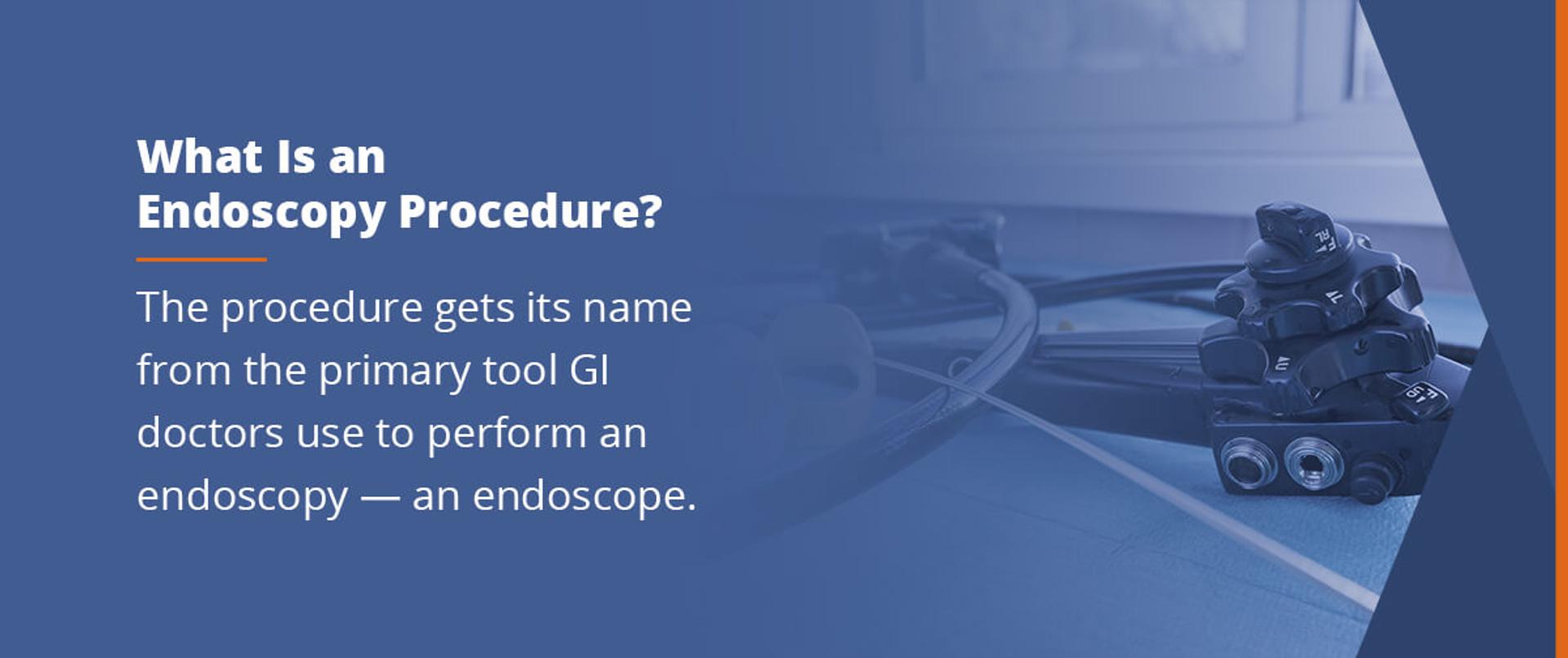
The procedure gets its name from the primary tool GI doctors use to perform an endoscopy — an endoscope. This tool is a thin, flexible tube with a light and tiny video camera attached. The camera allows GI doctors to visualize the digestive tract without opening it up, which would require major surgery.
GI doctors insert the endoscope down the esophagus and stomach and into the duodenum. If they're treating a condition or collecting tissue, they'll insert small surgical tools through the endoscope and perform surgery with the help of the attached video camera.
Why Is an Endoscopy Performed?
A doctor may perform an endoscopy for several reasons, which fall under either investigating symptoms, diagnosing illness, or treating or tracking the progression of a specific condition:
Investigating Symptoms
Certain symptoms warrant an endoscopy procedure:
- Abnormal X-ray results
- Bleeding in the upper digestive tract
- Blood in vomit or stool — stool may appear black, and vomit may look like coffee grounds
- Difficulty swallowing
- Heartburn
- Mysterious weight loss
- Persistent, unexplained abdominal pain
- Unexplained anemia, a condition where there's an insufficient amount of healthy red blood cells
Diagnosing Illness
If a doctor suspects that a patient could have a disease or condition of the digestive tract, they may suggest having an endoscopy to confirm or rule out a particular diagnosis. Some diseases or conditions that endoscopy can detect include:
- Blockages and inflammation in the digestive tract
- Cancerous and noncancerous tumors in the stomach, esophagus or intestine
- Celiac disease
- Crohn's disease
- Foreign object in the digestive tract
- Gastritis
- Gastroesophageal reflux disease (GERD)
- Narrowing of the esophagus
- Stomach ulcers, also called peptic ulcers
- Swallowing disorders, such as esophagitis or general dysphagia
Monitoring or Treating Illness
GI doctors also use endoscopy to treat and monitor various illnesses and conditions. Some of the ways GI doctors use an endoscopy as a treatment method include:
- Controlling bleeding in the upper digestive tract
- Performing a biopsy to collect tissue for diagnostic purposes, such as finding out if a polyp is cancerous
- Removing foreign objects, polyps or tumors from the digestive tract
- Stretching a narrowed esophagus
- Tracking tumor progression or checking on conditions like Barrett's esophagus — a condition involving precancerous growths
An X-ray is the standard diagnostic procedure in most cases with digestive issues. Still, an endoscopy can be invaluable when X-ray fails to provide doctors with the information they need concerning problems with the digestive tract. Other times, an endoscopy is combined with other imaging procedures, such as ultrasound or X-rays.
The Risks of Having an Endoscopy
An endoscopy is a safe, low-risk procedure. Still, any medical procedure has risk potential, and an endoscopy isn't an exception. Some risks associated with an endoscopy are general to any medical procedure, while others are unique to endoscopies.
Here are some of the rare risks associated with endoscopy procedures:
- Accidental aspiration of stomach contents in the lungs: This risk is minimized by having patients refrain from eating or drinking a certain amount of time before the procedure.
- Allergic reaction to anesthesia or sedation medication: Due to this risk, doctors always ask patients if they have allergies to any anesthetic or have had adverse reactions to the sedative, such as breathing or heart problems.
- **Bleeding from biopsy: **Bleeding may occur with an endoscopy if a biopsy is also performed. Usually, this bleeding is controlled easily and only rarely requires significant treatment interventions.
- Perforation in digestive tract lining or one of the examined structures: This risk is low, with an approximate one in 2,500-11,000 chance of occurring during any given endoscopy — percentage-wise, that equates to .004-.009%.
- Infection: Infection risks with an endoscopy are low. Even when they do occur, they're usually minor. That said, doctors may administer preventive antibiotics to reduce the infection risk further.
How Long Does an Endoscopy Procedure Take From Start to Finish?
Endoscopies vary in length depending on the purpose of the procedure. An endoscopy procedure itself takes around 15-30 minutes.
However, an endoscopy appointment takes longer, as patients receive anesthesia before the procedure begins, have monitors hooked up, and undergo other preparatory measures. Patients may also spend time in a recovery room as they wait for the anesthesia to wear off after the procedure.
Given those steps to performing an endoscopy, patients can expect an endoscopy appointment to last two to three hours from start to finish.
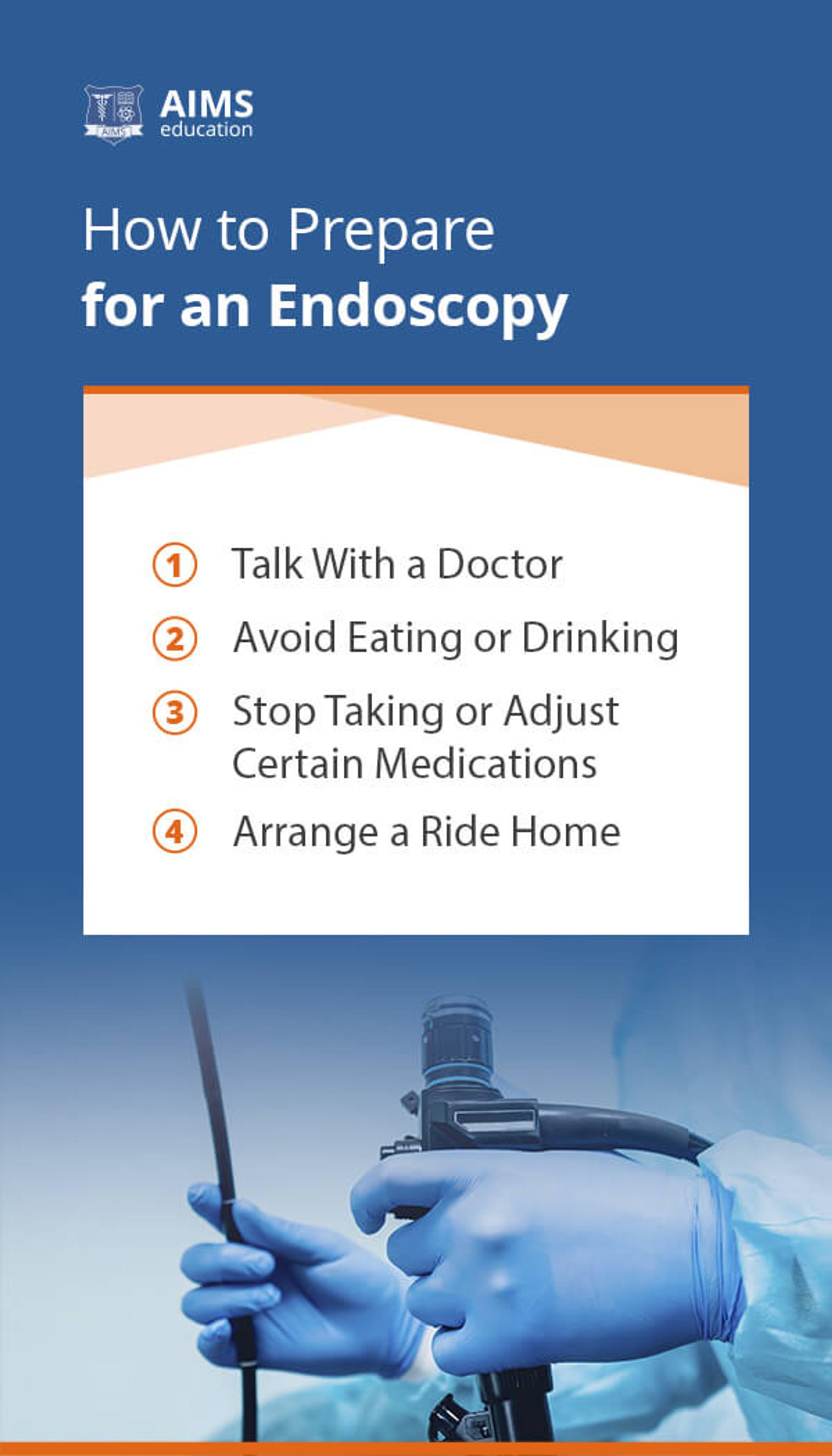
How to Prepare for an Endoscopy
Here are some things to keep in mind with endoscopy preparation:
1. Talk With a Doctor
Before an endoscopy, patients need to talk with the GI doctor about their medical histories, preexisting conditions, and any medications — prescription, over-the-counter (OTC), or supplements — they regularly take. This information will help the GI know if the patient needs to take any special precautions before an endoscopy, such as changes in medicine, anesthesia considerations, or other matters of concern.
2. Avoid Eating or Drinking
Patients must refrain from eating or drinking up to eight hours before the procedure. The reason for refraining from eating and drinking before an endoscopy procedure is two-fold.
Any food or liquid in the stomach or esophagus can obstruct the specialist's view during the procedure. An obstructed view can increase risks and limit the effectiveness of the procedure. Further, aspiration into the lungs could occur with any food in the stomach.
Thus, following this directive before an endoscopic procedure is essential for patient safety and the operation's success.
3. Stop Taking or Adjust Certain Medications
The doctor will also recommend that patients either stop taking or adjust the dosage of any medication that thins the blood before the procedure. These medications increase the patient's risk of bleeding with endoscopic procedures. If needed, the doctor can change the patient's prescription so they can continue receiving medication for a condition without increasing risks during an endoscopy procedure.
Some medications that may interfere or need to have a dosage adjustment with endoscopy include:
- Anticoagulants
- Antiplatelet medications
- Insulin
- Nonsteroidal anti-inflammatory drugs (NSAIDs)
4. Arrange a Ride Home
Because the doctor will give the patient anesthesia or a sedative before the endoscopy, they should arrange for a ride home after the procedure. Patients will be unable to drive for 24 hours after taking anesthesia for an endoscopy procedure. Avoid making significant financial or personal decisions during that time, as judgment, memory and reaction time may be impaired during those 24 hours.
It's best practice to have a scheduled day off for 24 hours after an endoscopic procedure.
What to Expect During an Endoscopy
On the day of an endoscopy, the patient will be given a specific time to arrive at the clinic or hospital. They should be sure to arrive in advance so the medical team has enough time to prepare for the procedure to begin at the appointed time. The doctor will also explain the procedure's steps, side effects, and potential complications before proceeding and answer any questions the patient may have.
A nurse will give the patient a hospital gown to change into and a tray to remove glasses and dentures if necessary. After they change and lie down on the hospital bed, a nurse or doctor may administer an anesthetic spray to the back of the patient's throat to minimize discomfort when the GI specialist inserts the endoscope down the esophagus. They'll also administer anesthesia or a sedative through an intravenous (IV) line. The patient will feel relaxed and drowsy within minutes.
Before inserting the endoscope, a nurse or doctor will place a mouthpiece in the patient's mouth that enables easy passage of the endoscope without interfering with breathing. As they lie on their left side, the doctor will insert the endoscope into the mouth, through the esophagus and into the stomach.
Once the endoscope is inserted, the GI specialist will pump air into the stomach and duodenum. The air enlarges those organs so they're easier to see. The doctor will look at a video monitor as they investigate symptoms to make a diagnosis or treat an illness or condition.
During this time, the doctor may block any bleeding, open up strictures, or collect a tissue sample for testing. The patient will be hooked up to a monitor so nurses can track their vitals as the doctor operates.
Do They Put You to Sleep for an Endoscopy?
Most of the time, doctors give a relaxing sedative to patients before an endoscopy that often puts them to sleep. That said, options vary from no anesthesia to general anesthesia when it comes to endoscopic procedures. When patients have general anesthesia, they're asleep for the duration of a procedure.
Is Endoscopy Painful?
If a patient is given a sedative or general anesthesia before an endoscopy, they shouldn't experience any pain during the procedure. However, they'll likely experience some discomfort if no anesthesia is used. It's common to experience discomfort after an endoscopy once the anesthesia or numbing agents wear off.
Still, any pain or discomfort the patient experiences should be minor during and after an endoscopy.
What to Expect After an Endoscopy
After an endoscopy, the patient will be taken to a recovery room where they can rest and allow the anesthesia to wear off slowly. The health care team will watch their vitals during this time. They'll stay in the recovery room for an hour or so before their chosen adult drives them home.
Once the patient is home, they may experience various side effects that should be temporary and minor. Some common endoscopy side effects include:
- Bloating and gas from the pumped-in air
- Cramping
- Fatigue and fuzziness as the sedative wears off
- Mild pain when swallowing
- Nausea from the anesthetic
- Sore throat
If an endoscopy procedure was done for diagnostic purposes, it could take varying lengths of time before the patient receives results. In some cases, the doctor may be able to share what they found during the procedure as soon as the patient is awake and alert after the procedure. In cases where the tissue was collected and needs analyzing, such as a biopsy, it can take up to two weeks before the patient gets their results back.
Signs of Complications After an Endoscopy
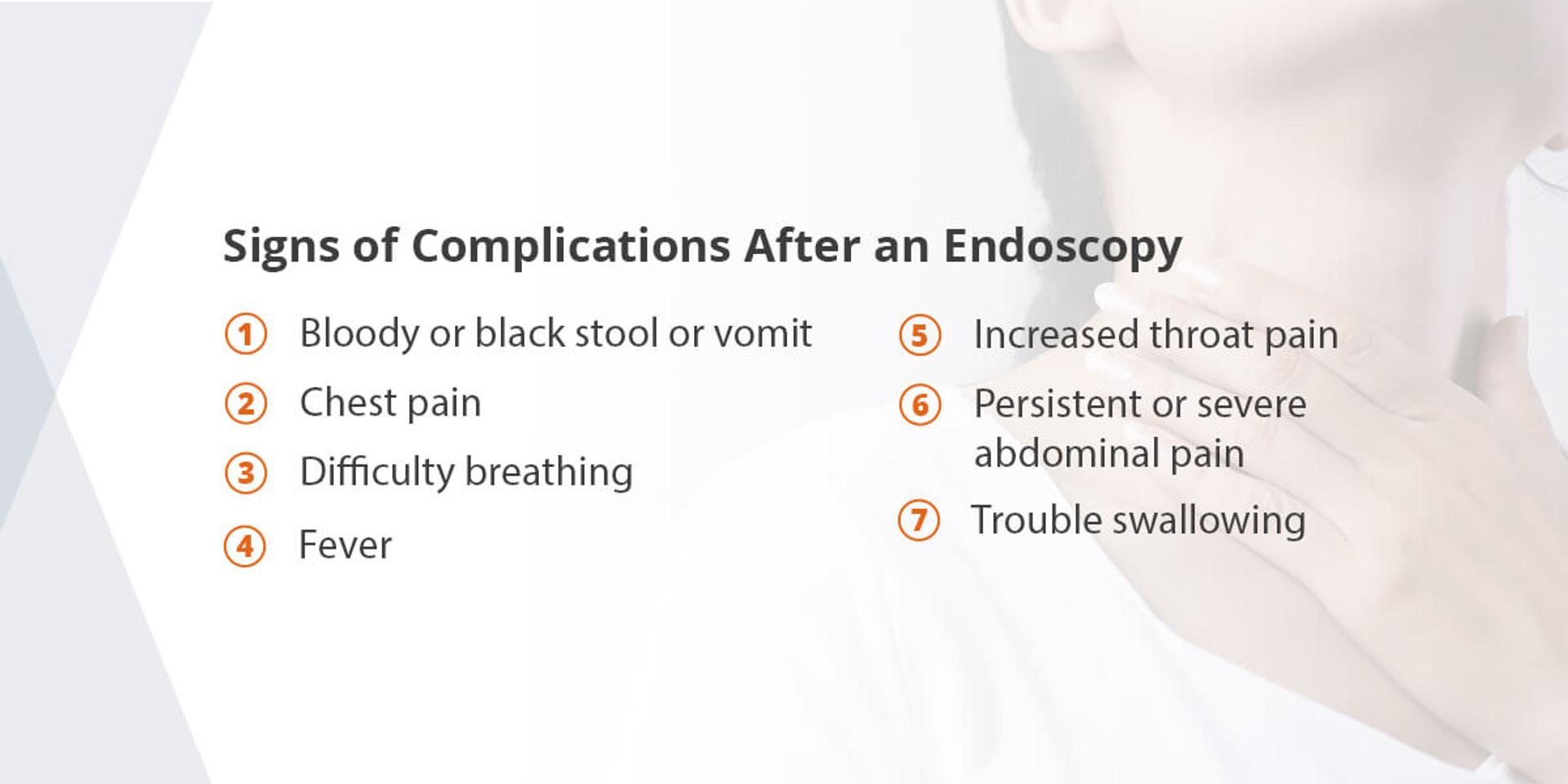
If a patient experiences worsening or different symptoms than the common endoscopy side effects, they must speak with their doctor, as they may be experiencing post-procedural complications. Here are some signs of complications after an endoscopy:
- Bloody or black stool or vomit
- Chest pain
- Difficulty breathing
- Fever
- Increased throat pain
- Persistent or severe abdominal pain
- Trouble swallowing
Becoming an Endoscopy Technician
An integral role in endoscopy procedures is that of the endoscopy technician. Endoscopy technicians assist nurses and surgeons during endoscopy procedures by preparing the room and equipment. They ensure all instruments function correctly, perform vital safety checks, and disinfect all surfaces and appliances. Along with nurses, endoscopy technicians monitor patients' vital signs and perform other patient care activities.
Endoscopy technicians make a respectable wage and work in a growing industry. The average annual salary for an endoscopy technician in NJ was $45,834 in June 2022, in line with the national average. Further, the job outlook for endoscopy technicians is higher than the national average. Considering the short training requirements involved in becoming an endoscopy technician, you can likely see the value of entering this industry.
Becoming an endoscopy technician involves participation in a formal training program. The program at AIMS takes approximately 11 months to complete. Thus, you can conceivably take the required courses, complete your clinical hours, and land your first job as an endoscopy tech within one year. Although certification for this position isn't always necessary, it significantly improves your chances of getting hired in an endoscopy tech position. The Certified Endoscope Reprocessor (CER) is the most recognized endoscopy tech certification, which the Healthcare Sterile Processing Association (HSPA) offers.
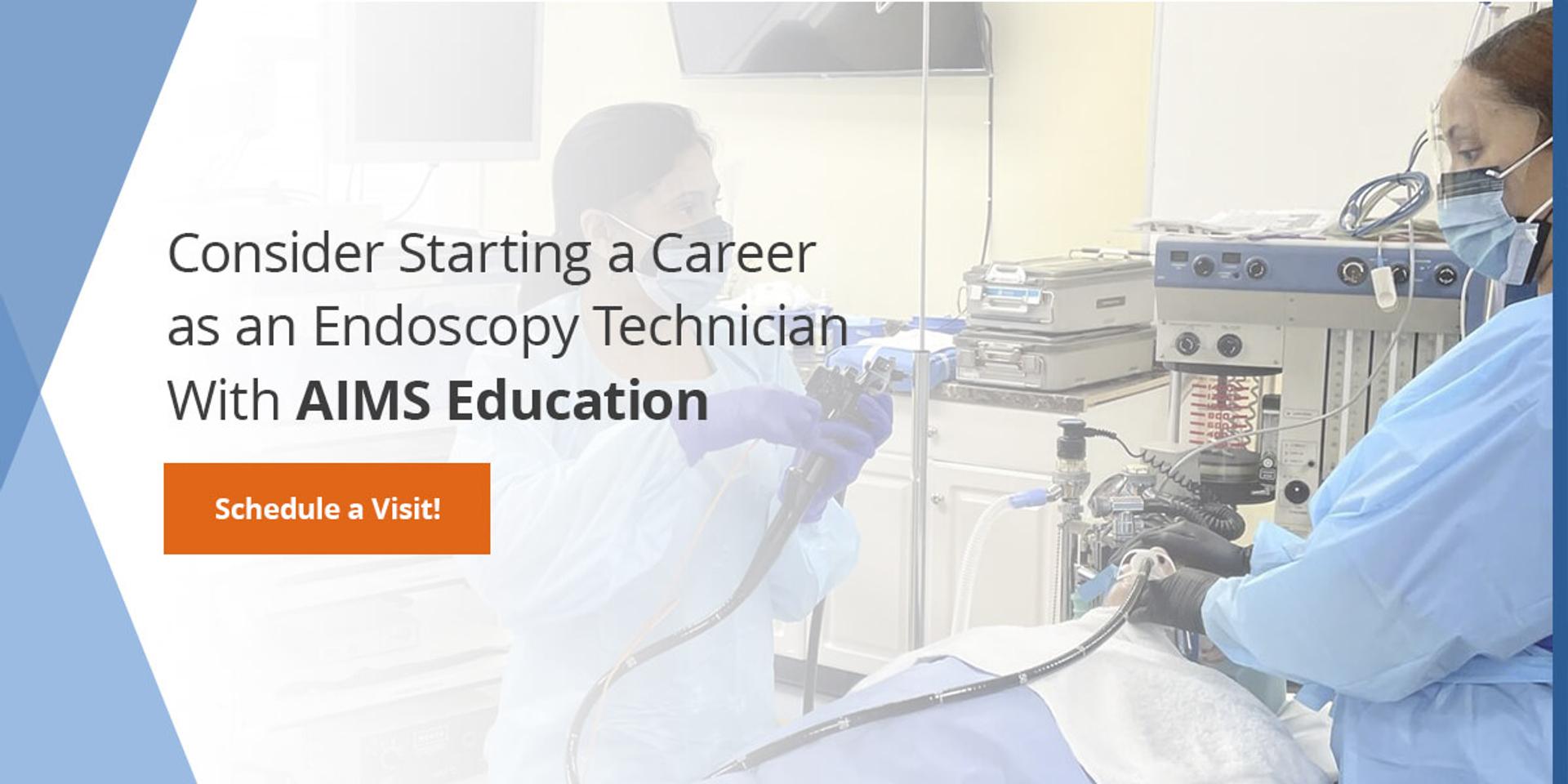
Consider Starting a Career as an Endoscopy Technician With AIMS Education
At AIMS Education, you can take the first step toward becoming an endoscopy technician. We offer a hybrid learning model for our endoscopy technician program. The program involves online learning, in-person lectures and labs, and a 300-hour clinical internship.
Learn more about what it takes to become an endoscopy technician at AIMS Education. Schedule a tour of our campus today!

